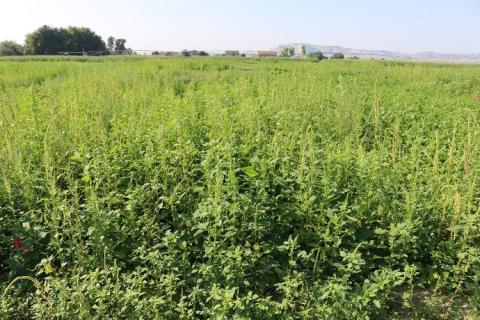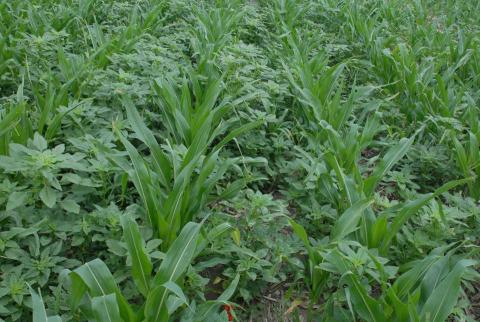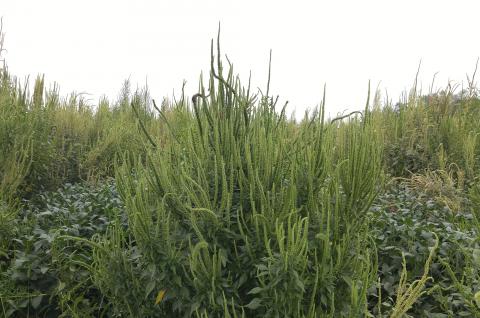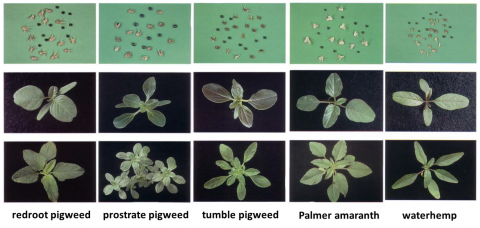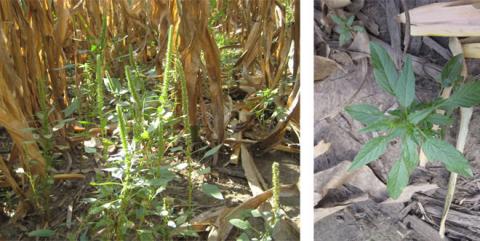Palmer Amaranth Control in Dry Bean
January 14, 2019
Residual herbicides applied at or before planting are critically important to controlling emerged Palmer amaranth in dry bean. Research at the Panhandle REC assessed the efficacy of PRE and pre-plant incorporated (PPI) residual herbicide programs.
Glyphosate-Resistant Palmer Amaranth Field Day July 11
June 25, 2018
Is glyphosate-resistant Palmer amaranth a growing challenge? View field demonstrations and hear from experts at the Glyphosate-Resistant Palmer Amaranth Management Field Day Wednesday, July 11 at Carleton.
How to Differentiate Common Waterhemp and Palmer Amaranth Seedlings
May 16, 2017
Growers should be on the lookout for common waterhemp and Palmer amaranth, which typically start emerging in the first or second week of May in Nebraska.
Watch for Palmer Amaranth in Conservation Reserve Program (CRP) Fields
May 12, 2017
Palmer amaranth has not been confirmed in conservation plantings in Nebraska; however, the identification and occurrence of Palmer amaranth in CRP fields in Iowa has raised concerns among weed scientists and growers about its spread into conservation plantings in Nebraska and offer some suggestions for growers.
Glyphosate-Resistant Palmer Amaranth Confirmed in South-Central Nebraska
March 15, 2017
Palmer amaranth (Amaranthus palmeri S. Wats.) is a C4 dioecious species (separate male and female plants) native to the southwestern United States.
Management of ALS-Resistant Palmer Amaranth and Waterhemp in the Panhandle
January 6, 2017
Palmer amaranth and waterhemp in the Panhandle are resistant to ALS-inhibiting herbicides. While control of these weeds in dry bean can be challenging, corn, irrigated small grains, and sugarbeet make good rotation options for control. A combined pre/post treatment strategy controls weeds in the early part of the season when crop yield is most impacted and weed species are most susceptible to control inputs.
Managing Herbicide-Resistant Palmer Amaranth Field Day
July 1, 2015
Learn how to get an edge on managing Palmer amaranth resistant to atrazine and HPPD-inhibitor herbicides Tuesday, Aug. 4 at a Nebraska Extension field day near Shickley.
